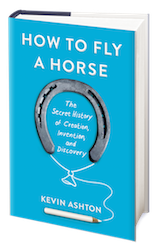
Looking for personal productivity, don’t try brainstorming. Flashback to 1985. I was vp of something at an automation company. The president had friends. One was a CPA who fancied himself as a management consultant. (Note: we went Chapter 7 of the US Bankruptcy Code. Guess he wasn’t that great.) He decided we needed a company-wide brainstorming session to help set company direction and product strategy.
We sat in a big room with tons of flip-chart paper. There were perhaps 50 people. We had lots and lots of ideas. Very few had to do with the business we were in. Most were people’s pet hobbies–“why don’t we start making XXX?” Let’s see, we had no manufacturing capability, no distribution channel, no sales, no marketing, etc.
That was my first brush with brainstorming. I was not impressed.
I just saw this post on Medium, a new, but proprietary blogging platform. Kevin Ashton wrote Brainstorming Does Not Work, Why people who brainstorm are wasting their time.
Ashton begins, “Brainstorming was invented by advertising executive Alex Osborn in 1939 and first published in 1942 in his book How to Think Up.” Osborn liked the process because it generated lots of ideas. But questions about its utility sprang up.
Ashton continues, “Follow-up research tested whether larger groups performed any better. In one study, 168 people were either divided into teams of five, seven, or nine or asked to work individually. The research confirmed that working individually is more productive than working in groups. It also showed that productivity decreases as group size increases.”
Personal productivity
Get that, an individual can be just as productive as a group. And the larger the group, the lower the productivity.
“Another assumption of brainstorming is that suspending judgment is better than assessing ideas as they appear. Researchers in Indiana tested this by asking groups of students to think of brand names for three different products. Half of the groups were told to refrain from criticism and half were told to criticize as they went along. Once again, independent judges assessed the quality of each idea. The groups that did not stop to criticize produced more ideas, but both groups produced the same number of good ideas. Deferring criticism added only bad ideas.”
The mantra is don’t criticize anything. Just write ideas. People who lead these things are always over the top enthusiastic. More ideas does not equal better ideas.
“Research into brainstorming has a clear conclusion. The best way to create is to work alone and evaluate solutions as they occur.”
And the conclusion:
“Having ideas is not the same thing as being creative. Creation is execution, not inspiration. Many people have ideas; few take the steps to make the thing they imagine.”
The blog post was excerpted from How to Fly a Horse: The Secret History of Creation, Invention, and Discovery, by Kevin Ashton, available here.





